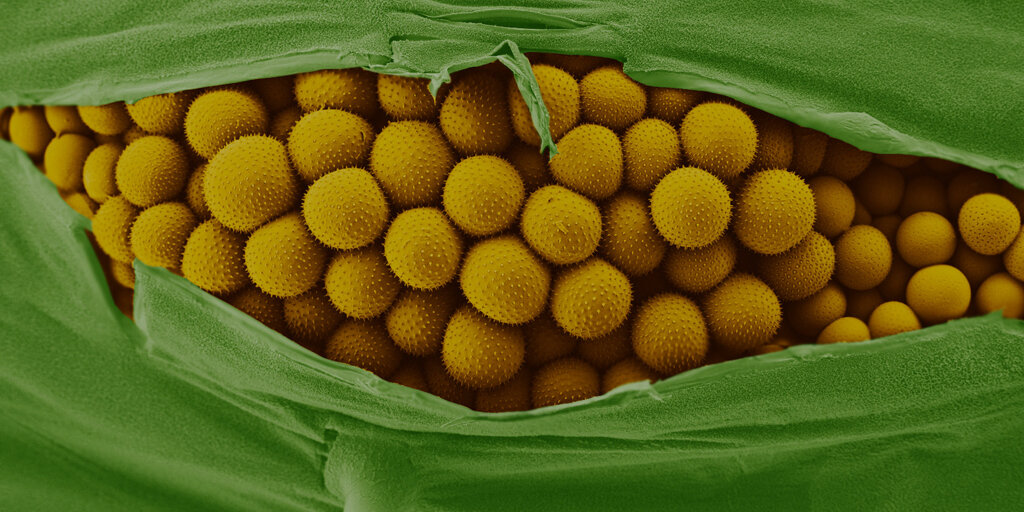Thank you for visiting PHYTOPIA. Leave us your feedback here and share your thoughts and experiences with your friends on social media.
Wheat Rust
What does it take to prevent plant diseases?
Plant pathogens can destroy food crops and pose a serious threat to agriculture. The wheat rust pathogen, also known as the “polio of agriculture”, can attack any above-ground part of the plant. A common visible symptom of this disease is the appearance of small, round, yellow spores on different parts of the plant.
This exhibit explores the visual beauty of the pathogen at a microscopic scale through the images captured by Diane Saunders and her group at the John Innes Centre. Using the latest DNA sequencing technology, Diane and her team pioneered a surveillance technique called Mobile And Real-Time Plant Disease (MARPLE) diagnostics, which allows them to identify individual strains of wheat rust pathogens within 48 hours of collecting infected field samples.
Banner Image: Yellow Rust spores can be seen bursting out of a wheat leaf from the inside, tearing their way through the epidermis. Scanning Electron Microscope Image. Courtesy of Kim Findlay, John Innes Centre.
Diane Saunders, Group Leader. Courtesy of Matt Heaton, John Innes Centre
Typical orange structures evident of stem rust infection on the leaves of a common barberry (Berberis vulgaris) plant. Courtesy of Clare Lewis, John Innes Centre.
Wheat plants heavily infected with the stem rust pathogen. Courtesy of Matt Heaton, John Innes Centre.
Black spores erupting from the surface of a wheat stem heavily infected with the stem rust pathogen. Courtesy of Andrew Davis, John Innes Centre.
Yellow rust spores erupting on the surface of a wheat leaf. Courtesy of Andrew Davis, John Innes Centre.
Tube-like reproductive structure (aecium) of stem rust protruding from the surface of a Berberis vulgaris leaf. Scanning Electron Microscope image. Courtesy of Kim Findlay, John Innes Centre.
Yellow Rust spores can be seen bursting out of a wheat leaf from the inside, tearing their way through the epidermis. Scanning Electron Microscope image. Courtesy of Kim Findlay, John Innes Centre
About the Researcher
Diane Saunders’ research focuses on (re-)emerging plant pathogens that pose a significant threat to agriculture. Her research group uses an array of different approaches to study plant pathogens to improve our understanding of how pathogens cause disease.
Her research includes numerous projects studying the wheat yellow rust pathogen, Puccinia striiformis f.sp tritici that recently re-emerged as a major constraint on UK agriculture. She is also currently leading a program to respond to the potential re-emergence of wheat stem rust in western Europe. Diane’s fundamental research has provided new knowledge on how pathogens successfully invade susceptible plant hosts and influence a host plant’ s circuitry during infection.











